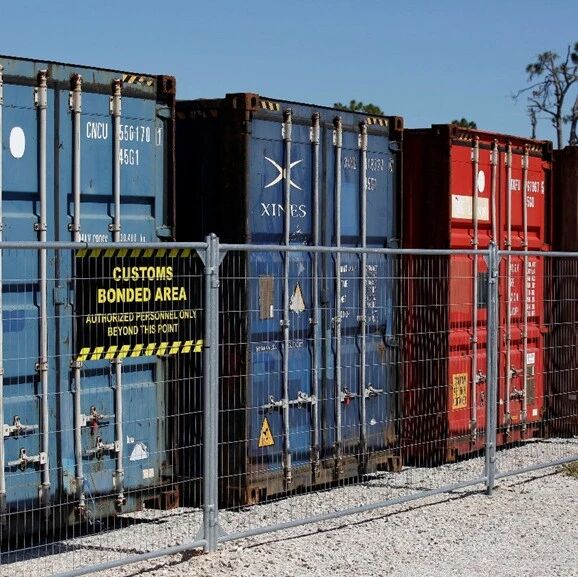Hydrogen energy innovation will spark a green revolution.
Image source:Unsplash/NEOM
Ben Queisser
Head of NEOM's Technology and Innovation Division
Hydrogen was once marginalized, but today it is emerging as a versatile and clean energy carrier, drawing growing attention.
From transportation to industrial processes, hydrogen's transformative potential across various sectors cannot be underestimated.
As we strive to tackle carbon emissions and the consequences of climate change, hydrogen energy offers a viable solution for decarbonizing our energy systems and paving the way for a new era of sustainable development.
Low-carbon hydrogen is not just a technological advancement—it also marks a profound paradigm shift in how we perceive and harness energy.Low-carbon hydrogen once remained in the shadow of traditional fuels, but now it’s emerging as a transformative force—leading the charge in our global fight against climate change. This versatile and clean energy carrier has the potential to revolutionize multiple sectors, paving the way for a new era of sustainable development that prioritizes environmental responsibility.The Paradigm Shift in Green EnergyUnlike electrons, which can travel long distances through copper-core hard cables to deliver clean energy, hydrogen is a molecule that can be embedded in various physical states—gas, liquid, and solid—giving clean, renewable energy greater flexibility in meeting our everyday needs. As a renewable energy source that doesn’t rely on cables for transmission, harnessing hydrogen in this way ensures carbon emissions are minimized as much as possible, which is precisely why hydrogen is often referred to as "green" energy.In the transportation sector, traditional fuels lead to severe air pollution and greenhouse gas emissions—yet hydrogen is changing the game. Hydrogen fuel cell vehicles offer a zero-emission mobility option, as the only byproduct of the electrochemical reaction between hydrogen and oxygen is water vapor. This makes them a powerful solution for tackling air quality issues in urban areas while significantly reducing the transportation sector's overall carbon footprint.Hydrogen energy powers buses, trucks, maritime transport, and aviation, offering a practical and scalable solution to reduce the environmental impact of global transportation systems. Enhancing the efficiency, durability, and affordability of fuel cells across diverse applications—such as transportation, heating, and power generation—will further expand the widespread use of hydrogen.The transportation sector is just one of the areas where green hydrogen can shine. When it comes to capturing carbon emissions, we’re dealing with an entire energy system built around the processing and combustion of fossil fuels. But now, you can combine the captured carbon with green hydrogen—and by creating recyclable or renewable carbon-based fuels—reverse this process entirely. This approach effectively prevents continuous CO₂ emissions into Earth’s atmosphere.Beyond transportation, hydrogen's influence has also extended to industrial processes—often major contributors to carbon emissions. The decarbonization efforts in sectors like steel and cement production vividly highlight hydrogen's versatility.Steel manufacturers can significantly reduce carbon emissions by adopting a process called "hydrogen direct reduction," which replaces traditional, carbon-intensive methods. Tailoring hydrogen applications to meet the specific needs of industries such as steel production, aviation, and maritime shipping will require innovative approaches, including specialized fuel cell systems and optimized combustion technologies.Leading the Future of Carbon NeutralityLocated in northwestern Saudi Arabia, the New Future City (NEOM) is an emerging development zone and also an ambitious infrastructure project, demonstrating the feasibility of large-scale green hydrogen production. The region boasts abundant solar and wind energy resources, making it an ideal location for renewable energy initiatives.NEOM's strategy aligns perfectly with the goals of the green hydrogen economy. That’s why NEOM Green Hydrogen Company, along with its industry partners, is currently building the world’s largest renewable-energy-powered electrolysis plant for hydrogen production.ENOWA is NEOM’s subsidiary in the fields of sustainable energy, water, and hydrogen, playing a pivotal role in shaping the region’s energy landscape. Together with its partners, these companies aim to redefine eco-conscious, modern urban living through collaborative efforts.Innovative technology is the key to realizing this vision and is driving the transition toward sustainable hydrogen production. Advances in electrolysis technology—particularly the development of highly efficient and cost-effective electrolyzers—have played a central role. Progress in electrolyzer technologies that use renewable electricity to split water is critical, with key focus areas including high-performance materials, low-cost manufacturing, and seamless integration with variable renewable energy sources like solar and wind power.Accelerate hydrogen energy applicationsDeveloping new materials that can store large amounts of hydrogen efficiently—without significant energy loss and at low cost—is crucial for advancing the transportation industry and ensuring its long-term sustainability. Upgrading existing hydrogen pipelines, building new ones, and exploring alternative carriers such as organic liquid hydrides or ammonia can provide more flexible and cost-effective solutions for hydrogen delivery.In the pursuit of sustainable development and a hydrogen-powered future, global collaboration and investment in research play a critical role in accelerating the adoption of this transformative energy source—this is precisely why ENOWA has established the Hydrogen Innovation Hub and the NEOM Green Hydrogen & Synthetic Fuels Application Institute in Oxagon, NEOM.NEOM aims to drive horizontal and vertical innovation in hydrogen energy technology, positioning its rapidly growing sectors and industries as hubs for research and development. The initiative attracts leading energy experts and researchers to collaborate and work within these cutting-edge environments, while also bringing together a diverse array of specialists, academics, and industry leaders.The Path to Integrating Hydrogen EnergyGlobally, hydrogen production will remain unable to achieve commercialization without strong government support. Governments worldwide recognize the need for strategic planning and investment, providing incentives, regulatory frameworks, and infrastructure support to propel hydrogen energy projects forward. Meanwhile, driven by innovation and investment, increased private-sector involvement is further ensuring the development, deployment, and seamless integration of hydrogen technologies into mainstream energy systems.Infrastructure development is a critical challenge on the path to hydrogen integration. To seamlessly deploy hydrogen as a mainstream energy source, we urgently need robust production facilities, reliable storage solutions, and an extensive network of transportation systems. Moreover, transportation infrastructure—such as pipelines and hydrogen refueling stations—is essential for ensuring hydrogen’s accessibility and efficient distribution across various sectors.However, hydrogen's versatility—and its ability to serve as an energy carrier, embedded in chemicals and fuels like ammonia, methanol, or even synthetic carbon-cycled fuels such as gasoline or kerosene—opens up a complete pathway for leveraging existing infrastructure. This adaptability not only cuts down on implementation time but also offers a far more cost-effective alternative to building entirely new power lines for renewable energy transport.Trust and Sustainability in the Hydrogen EconomyEstablishing a robust and transparent system to certify the origin and environmental footprint of hydrogen is just as critical as fostering consumer trust and building a sustainable market. The immediate priority is to move beyond technology-driven color-coding systems that currently limit the value and impact of low-carbon hydrogen. Educating the public about the potential and benefits of low-carbon hydrogen is essential for accelerating its widespread adoption and attracting much-needed investments.We are standing at the cusp of a hydrogen-energy revolution, with a sustainable future within reach. Hydrogen innovation isn’t a paradigm shift that requires countless tech experts to "invent the future"—it’s a direct technological advancement, much like solar energy itself. The only real paradigm shift that hydrogen brings is its potential to reshape how we produce and consume energy.
The above content solely represents the author's personal views.This article is translated from the World Economic Forum's Agenda blog; the Chinese version is for reference purposes only.Feel free to share this in your WeChat Moments; please leave a comment below if you'd like to republish.
Translated by: Sun Qian | Edited by: Wang Can
The World Economic Forum is an independent and neutral platform dedicated to bringing together diverse perspectives to discuss critical global, regional, and industry-specific issues.
Follow us on Weibo, WeChat Video Accounts, Douyin, and Xiaohongshu!
"World Economic Forum"





